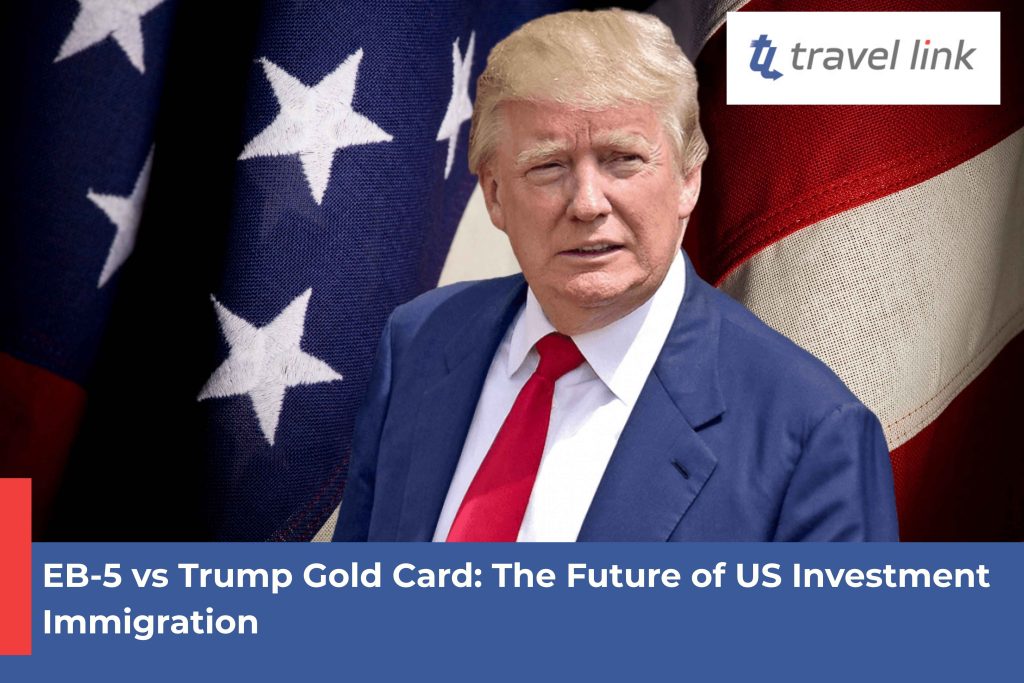Introduction
As the United States continues to attract global investors seeking residency through investment, two options are making headlines: the established EB-5 Immigrant Investor Program and the newly proposed Trump Gold Card. In this article, we’ll explore the evolution of the EB-5 program, the uncertainties surrounding the Gold Card proposal, and what prospective investors need to know about securing US residency through investment.
What Is the EB-5 Visa Program?
The EB-5 visa is a US investment immigration program created by Congress in 1990. Its goal is to stimulate the American economy by encouraging foreign investors to contribute capital and create jobs. Under the EB-5 program, investors can obtain a Green Card—and ultimately US citizenship—by investing at least $800,000 in a Targeted Employment Area (TEA) or $1,050,000 elsewhere, and creating at least 10 full-time jobs for US workers.
Key Advantages of the EB-5 Program:
- Direct pathway to permanent US residency (Green Card)
- Eligibility for the investor, spouse, and children under 21
- No sponsorship required from family or employer
- Freedom to live, work, or study anywhere in the US
Recent reforms, including the 2022 EB-5 Reform and Integrity Act (RIA), have increased investment requirements, introduced stricter compliance measures, and allowed for concurrent filing of adjustment of status applications. Despite these improvements, applicants from countries like China, India, and Vietnam still face significant visa backlogs and processing delays.
What Is the Trump Gold Card?
The Trump Gold Card is a recently proposed US investment immigration option. Unlike the EB-5, the Gold Card is still conceptual and has not yet been legally established. The proposal suggests a higher minimum investment of $5 million, with promises of a faster path to US citizenship and potential tax exemptions on foreign income. However, the Gold Card lacks a formal legal framework, clear regulatory oversight, and specific requirements for job creation.
Key Points of the Trump Gold Card Proposal:
- Minimum investment of $5 million
- No defined job creation requirements
- Advertised as faster, but timelines are unclear
- Claims of tax benefits, though these conflict with current US tax law
- Planned to be launched by executive order, raising questions about legal durability
- No published regulations or Congressional approval
EB-5 vs Trump Gold Card: Legal and Practical Considerations
When comparing the EB-5 visa to the Trump Gold Card, several critical differences emerge:
- Legal Foundation: The EB-5 is established by an act of Congress and thoroughly regulated. The Gold Card is only a proposal without legislative backing.
- Investment Amount: EB-5 requires $800,000–$1,050,000; Gold Card proposes $5 million.
- Job Creation: EB-5 mandates creating at least 10 full-time jobs; Gold Card has no clear job creation criteria.
- Path to Citizenship: EB-5 offers a defined path, typically taking 5–7 years. Gold Card promises expedited citizenship but details are vague.
- Oversight and Security: EB-5 is monitored by USCIS and other authorities. The Gold Card currently lacks oversight mechanisms.
- Taxation: EB-5 investors are taxed on global income; Gold Card claims exemptions that may not be legally feasible.
- Current Status: EB-5 is active and reauthorized through 2027. Gold Card is not implemented.
What Should Investors Consider?
For investors and families seeking US residency by investment, the EB-5 visa remains the most reliable and legally secure option. While the Trump Gold Card proposal offers ambitious promises, its lack of legislative foundation and regulatory clarity introduces high risks and uncertainties.
Key advice for investors:
- Prioritize programs with legislative backing and regulatory transparency.
- Consult with experienced US immigration lawyers before making investment decisions.
- Beware of unregulated alternatives that could jeopardize your investment and immigration status.
Conclusion
Investment immigration to the US is a significant and strategic decision. The EB-5 program, with its long-standing legal foundation, offers a proven route to US residency and citizenship for eligible investors. The Trump Gold Card, while intriguing, remains speculative and carries unresolved legal and practical questions.
For those considering a move to the US through investment, clarity, caution, and professional advice are essential. Stay updated on the latest policy changes and choose the path that best aligns with your long-term goals.
Are you interested in learning more about US investor visas? Contact our experts today for personalized guidance on the EB-5 program and other legal pathways to US residency.
